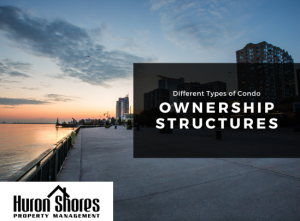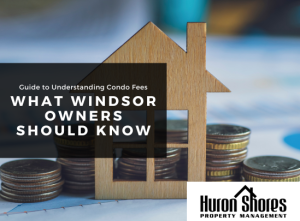Condominiums are a popular housing option for many people, offering a convenient, low-maintenance lifestyle. However, it’s essential to understand the different types of condominium ownership structures to make informed decisions about buying and owning a condo. This blog post will discuss the different types of condominium ownership structures and what they mean for condo owners and buyers.
Types of Condominium Ownership Structures:
Freehold Condominiums:
Freehold condominiums are the most common type of condominium ownership structure. In this type of ownership, the condo owner owns the unit and the land beneath it outright. The owner is responsible for maintaining the unit’s interior and any outdoor areas designated for their exclusive use.
Leasehold Condominiums:
Leasehold condominiums are less common than freehold condominiums. In this type of ownership, the condo owner owns the unit but leases the land beneath it from the landowner. The lease term can vary but is typically long-term, such as 99 years. The owner is responsible for maintaining the unit’s interior and any outdoor areas designated for their exclusive use.
Common Elements Condominiums:
Common elements condominiums are a unique type of ownership structure. In this type of ownership, the condo owner does not outright own the unit or the land beneath it. Instead, the owner has an interest in the common elements of the building, such as the roof, walls, and foundation. In addition, the owner is responsible for maintaining the unit’s interior. Still, the common elements are maintained by the condo corporation.
Vacant Land Condominiums:
Vacant land condominiums are another unique type of ownership structure. In this type of ownership, the condo owner owns a piece of vacant land designated as a condominium corporation. The owner is responsible for maintaining the land, and the condo corporation maintains the common elements.
What It Means for Condo Owners and Buyers:
Understanding the different condominium ownership structures is essential for condo owners and buyers. Each type of ownership structure comes with its responsibilities and limitations. For example, in a freehold condominium, the owner has more control over the unit and the land beneath it but is responsible for maintaining all of it. On the other hand, in a common elements condominium, the owner has less control over the building but is only responsible for maintaining the unit’s interior.
Final Thoughts
The different condominium ownership structures can be confusing, but understanding them is essential for homeowners and buyers. Knowing the responsibilities and limitations of each type of ownership can help you make informed decisions about buying and owning a condominium. To learn more about condominium ownership structures and how they impact your condo ownership experience, contact Huron Shores Property Management at 519-916-1113 or huronsshores@hspm.ca, and visit our website at huron-shores.com.





